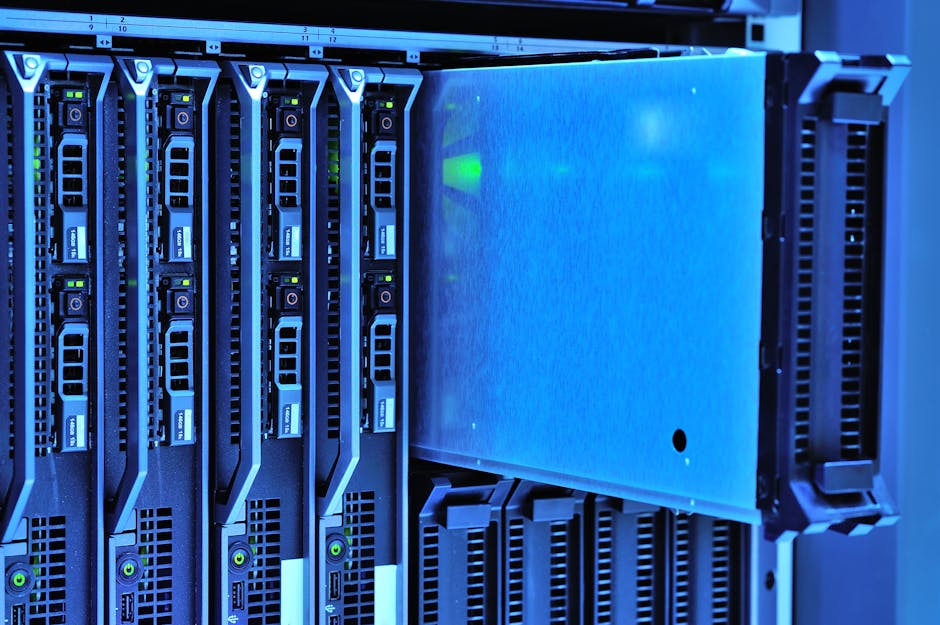Introduction
Safeguarding your data is more important than ever. Network-Attached Storage (NAS) and Storage Area Network (SAN) stand out as two pivotal technologies, offering different yet critical solutions for managing and protecting data. Whether for home use or in enterprise settings, understanding these technologies and their respective benefits is key to making informed decisions about your data storage and backup strategies.
Understanding NAS
At its core, NAS is about sharing and accessing data easily. It’s a dedicated, file-level storage system that enables multiple users to share and access data as if it were on their own computer. This simplicity and efficiency make it ideal for home and small office settings, where straightforward data access and sharing are vital.
NAS vs SAN
The distinction between NAS and SAN narrows down to how data is accessed and shared. NAS deals with file-level storage, making it user-friendly and accessible over a standard Ethernet connection. On the other hand, SAN provides block-level storage, offering higher performance and efficiency, well-suited for enterprises needing to support complex databases and applications.
The choice between NAS and SAN ultimately depends on your specific data access needs, backup strategies, and the scale at which you operate.

This introduction aims to set the stage for a deeper exploration into NAS systems, their comparison with SAN, how to choose the right option for your needs, and strategies to back up your critical data effectively.
Benefits of Secure Data Protection
When it comes to selecting the ideal Network-Attached Storage (NAS) for your specific situation, weigh several factors. Whether you’re outfitting a cozy home office or scaling an enterprise operation, the right NAS can significantly impact your data management and network storage backup capabilities.
For Home and Small Office
For home users and small offices, affordability and ease of setup are key. Brands like Synology and QNAP offer devices that balance cost with a robust set of features. These units often support multiple drive bays, allowing for RAID configurations that provide redundancy and protect against data loss.
- Synology units are praised for their user-friendly interface and extensive support for third-party apps. They make network storage backup straightforward, offering peace of mind for users with critical data.
- QNAP devices, on the other hand, are known for their high performance and flexibility. They cater to users with more demanding storage and media streaming needs, without making the setup process too complex.
For Enterprises
In an enterprise setting, scalability, performance, and security features take precedence. High-end models from the same brands can serve thousands of client systems, providing petabytes of storage with rapid access and clustering capabilities to avoid single points of failure.
- Scalability ensures that as your business grows, your NAS can grow with it. Look for models that support adding additional drive bays or connecting to expansion units.
- Performance is critical when multiple users are accessing the NAS simultaneously. Devices with multicore processors and ample RAM can handle this demand more efficiently.
- Security features such as hardware-level encryption and the ability to set complex permission systems protect sensitive business data from unauthorized access or theft.
NAS Features to Consider
When comparing NAS options, here are some critical features to keep in mind:
- Drive Bays: The number of drive bays determines how much storage you can add to your NAS and influences the type of RAID configuration you can set up for redundancy and performance.
- CPU and RAM: These components impact the overall speed and responsiveness of your NAS, especially when multiple users are accessing it simultaneously or when running demanding applications.
- Encryption: Look for devices with hardware-level encryption acceleration to secure your data without sacrificing performance.
- Software: The operating system and available apps can greatly expand the functionality of your NAS, from running virtual machines to hosting websites and more.
- Backup Support: Ensure the NAS supports your preferred backup methods, whether it’s NAS-to-NAS backup, cloud backup, or traditional network-based backup solutions.
- Media Streaming: If you intend to use your NAS as a media server, check for support for Plex or other media server software, as well as the necessary transcoding capabilities.
- USB Ports: Additional ports allow you to connect external drives for expanded storage or backup, as well as other peripherals.
- Third-Party Apps: The ability to install apps from third-party developers can significantly extend the usefulness of your NAS, from CRM software to development tools.
Choosing the right NAS involves balancing these features against your specific needs and budget. Whether for home or business, the right NAS can serve as the cornerstone of your network storage backup strategy, ensuring your data is safe, accessible, and well-managed. For more insights on backing up your NAS, consider exploring resources like Backblaze’s guide on backing up QNAP NAS to the cloud.
With the right information and a clear understanding of your requirements, selecting the perfect NAS solution doesn’t have to be daunting. The next section will delve into NAS backup strategies, highlighting the importance of data protection and the various approaches to securing your digital assets.
NAS Backup Strategies
Where data is as valuable as gold, protecting it is not just an option; it’s a necessity. Whether it’s personal memories or critical business information, losing data can be devastating. This is where Network Attached Storage (NAS) backup strategies come into play – serving as your digital safety net.
Importance of NAS Backup
Data protection, disaster recovery, and redundancy are the pillars of NAS backup strategies. These strategies are not just about preventing data loss; they’re about ensuring that your life or business can continue with minimal disruption after any data disaster – be it a cyberattack, hardware failure, or a natural disaster.
NAS Backup Approaches
There are several ways to back up the data on your NAS, each with its own advantages:
- NAS to NAS: This approach involves using two NAS devices, where one serves as the primary storage and the other as the backup. This method is straightforward and keeps your data within your control but requires an initial investment in a second NAS.
- Cloud Backup: Leveraging cloud services for backing up NAS data offers off-site redundancy and access from anywhere in the world. This method is scalable and eliminates the need for physical hardware maintenance. Though, that ongoing costs can add up, and you’re entrusting your data’s security to a third party.
- NDMP (Network Data Management Protocol): NDMP standardizes the way data is transferred from a NAS to a backup device. It’s efficient and doesn’t overload the network, making it ideal for large enterprises.
- Traditional Network-Based Backup: This method uses software to back up data from the NAS to a server, either on-site or off-site. It’s a more traditional approach and can be customized to fit specific needs.

Securing Your NAS Backup
Securing your backup is as crucial as the backup itself. Here are some strategies to ensure your NAS backup is safe:
- Updates: Regularly update your NAS firmware and backup software. This closes security vulnerabilities and keeps your system running smoothly.
- Two-Factor Authentication (2FA): Adding an extra layer of security, 2FA requires a second form of identification beyond just a password, making unauthorized access considerably more difficult.
- HTTPS: When accessing your NAS remotely, ensure the connection is encrypted with HTTPS. This prevents data from being intercepted during transmission.
- Firewall: A firewall monitors incoming and outgoing network traffic and can block suspicious activity. It’s a fundamental layer of defense that should not be overlooked.
Securing your data with a robust NAS backup strategy is not just about avoiding data loss; it’s about peace of mind. Knowing that your digital life or business can withstand whatever comes its way is invaluable. As technology evolves, so too do the threats against our data. Staying informed and prepared is the best defense.
Remember that reclaiming NAS capacity and reducing backup times are critical for maintaining an efficient, secure data environment. ETTE’s expertise in hardware and software support can guide you through these challenges, ensuring that your NAS serves your needs today and in the future.
In the next section, we’ll explore how to reclaim NAS capacity and reduce backup times, further optimizing your data storage and protection strategies.
Conclusion
Wrapping up our comprehensive dive into Network-Attached Storage (NAS), we’ve covered a lot of ground, from understanding what NAS is, to exploring backup strategies and ensuring the security of your NAS backups. Now, let’s focus on how to make the most of your NAS setup by reclaiming NAS capacity, reducing backup times, and leveraging ETTE’s expertise in hardware and software support to bolster your network storage backup strategies.
Reclaiming NAS Capacity
As your business grows, so does your data. Over time, your NAS might start to fill up, affecting its performance and your ability to store new data. Here’s a quick tip: Regularly review and clean up your stored data. This might involve archiving old files to a different location or deleting data that’s no longer necessary. By doing so, you can free up valuable space and keep your NAS running smoothly.
Reducing Backup Times
Long backup times can be a headache, especially when they interfere with your workflow or data availability. Here’s a strategy to help reduce backup times:
- Incremental Backups: Instead of doing full backups every time, consider incremental backups, which only back up the data that has changed since the last backup. This can significantly reduce the amount of data being transferred and shorten backup times.
- Schedule Wisely: Schedule backups during off-peak hours to minimize the impact on your network and system resources.
ETTE’s Expertise in Hardware and Software Support
At ETTE, we understand the challenges businesses face when it comes to managing their data storage and backups. That’s why we offer comprehensive hardware and software support services to help you navigate these complexities. Our team of experts can assist you in optimizing your NAS setup, implementing effective backup strategies, and ensuring your data is secure and accessible when you need it.
Whether you’re looking to maximize your NAS capacity, reduce backup times, or secure your network storage backup, ETTE is here to help. With our wealth of experience and commitment to excellence, we’re your go-to partner for all your data storage and backup needs.
A well-maintained NAS system is key to ensuring your data is protected and readily available. By following best practices for NAS backup and leveraging expert support, you can enjoy peace of mind knowing your data is in good hands.
In today’s data-driven world, having a reliable network storage backup solution is not just a convenience—it’s a necessity. Let ETTE be your guide to navigating the complexities of NAS and ensuring your business’s data is secure, accessible, and efficiently managed.

